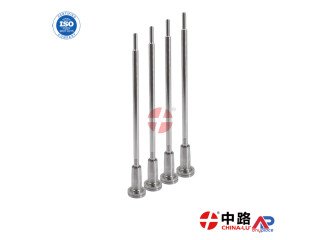Why Should the Pharmaceutical Industry Use a Vibrating Screen?
2022-01-06 11:57 Automobiles Bathinda 286 views Reference: 468Location: Bathinda
Price: Contact us
In Vibrating Screens, the vibratory motion is coupled with gravity to make the screening process more efficient. With vibration, the particles of the product placed on the screen mesh jump and hit against the screen openings, more likely to pass through.
Process efficiency is expressed as a percentage. The vibrating screen never reaches 100% efficiency because it would require an extremely long process. However, the most modern equipment achieves high percentages, acceptable for what is required.
A basic Vibrating Feeder consists of a trough supported by springs, hinged links, or other force-dampening mechanical components. These isolate the vibratory feeder from the structural members of the building which can cause unwanted reaction forces. Attached to the trough is a drive unit that produces high frequency, low amplitude oscillations. These oscillations are tuned to create the desired movement of the material.
A vibratory feeder is one of the many pieces of equipment designed for bulk handling. Bulk handling materials have certain properties that separate them from fluids (liquid and gas). Other equipment used for transporting bulk materials are screw conveyors, belt conveyors, apron conveyors, flight and drag conveyors, pneumatic conveyors, reciprocating plates, and so on.
Dosing Feeders and conveyors have operating frequencies that range from 200 to 3600 vibrations per minute with an amplitude of 1 to 40 mm. The vertical acceleration component is usually near gravitational acceleration (9.81 m/s2). This is enough to transport materials with a gentle shuffling motion producing minimal impact and noise. Because of this, the material moves across the trough by sliding action. The material does not actually leave the surface of the trough when the pressure between the surface and the material is at a minimum. In applications where the material has to lift from the trough and then impact again as it falls, special considerations must be made to counter the impact force and the increased noise levels.
Vibratory feeders are distinct from other bulk material handling equipment because the material moves independently from the conveying medium. This contrasts equipment such as conveyor belts and aprons where the material is static relative to the conveying medium. This enables additional processes to be integrated while the material is in transit. Below are some of the processes that can be performed while transporting using vibratory feeders.
Vibration Exciter is a cylinder easy vibration molding machine without mold lifting mechanism. It is a device that obtains mechanical vibration by using electric, electro-hydraulic, piezoelectric or other principles. The principle is that the excitation signal is input into a coil placed in a magnetic field to drive the workbench connected with the coil. The electric vibration table is mainly used for vibration measurement above 10Hz, and can excite a maximum pressure of 200N. In the frequency range below 20Hz, Electro-hydraulic Shaking table is often used. At this time, the nature of vibration signal is controlled by electric servo system. The hydraulic drive system can give large displacement and impact force. The vibration table can be used for the calibration of accelerometers, the vibration performance measurement of electroacoustic devices and their vibration test. For different test objects and technical indicators, pay attention to the selection of vibration tables with different structures and excitation ranges.
The Vibrator motor is a coreless DC motor whose size is compact. The original purpose of this motor is to alert the user from receiving the call without sound/vibrating. The main feature of this motor is, it has magnetic properties, is lightweight, and motor size is small. Based on these features, the motor performance is highly consistent. The configuration of these motors can be done in two varieties: one is a coin Model, and another one is a cylinder Model. The vibrator motor specifications mainly include type, max Operating Torque, max, centrifugal force, weight Range, rated Current, and Output.












